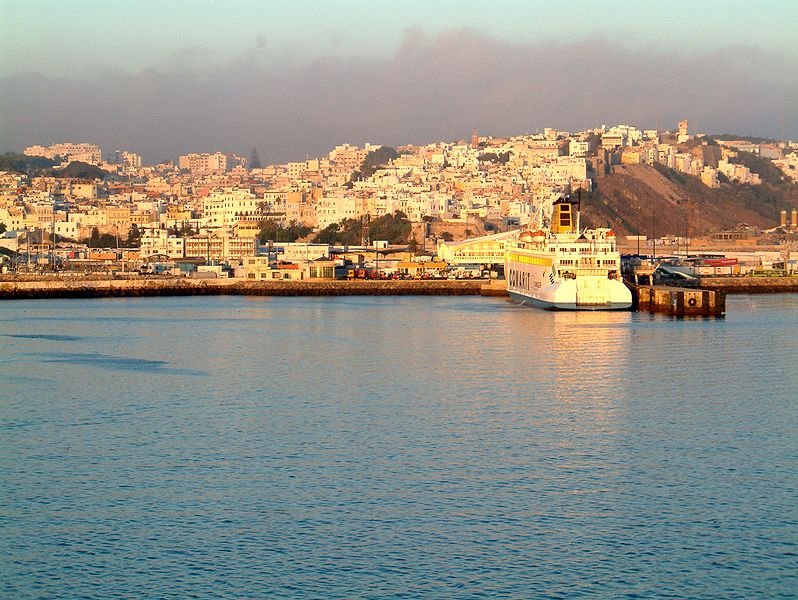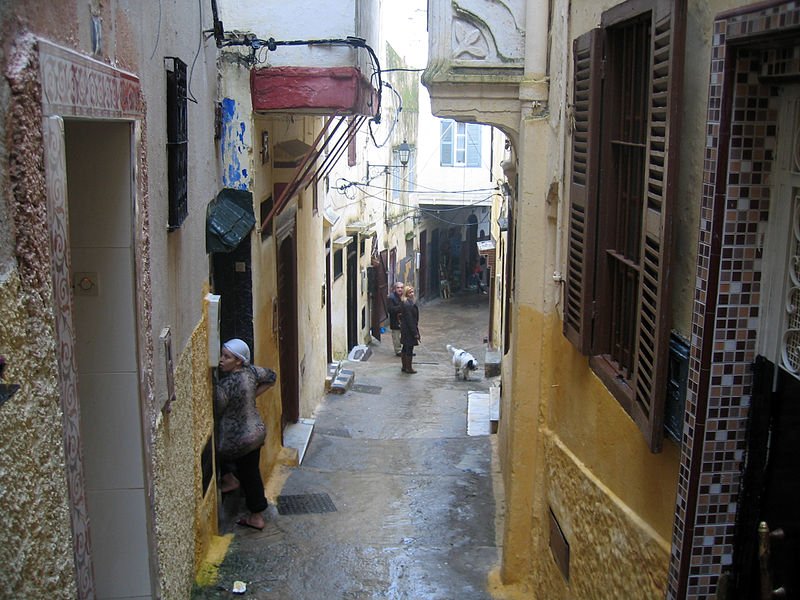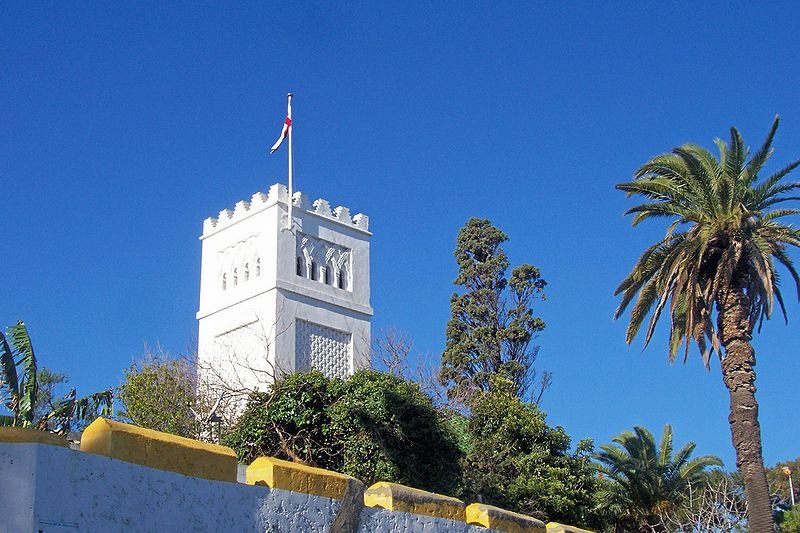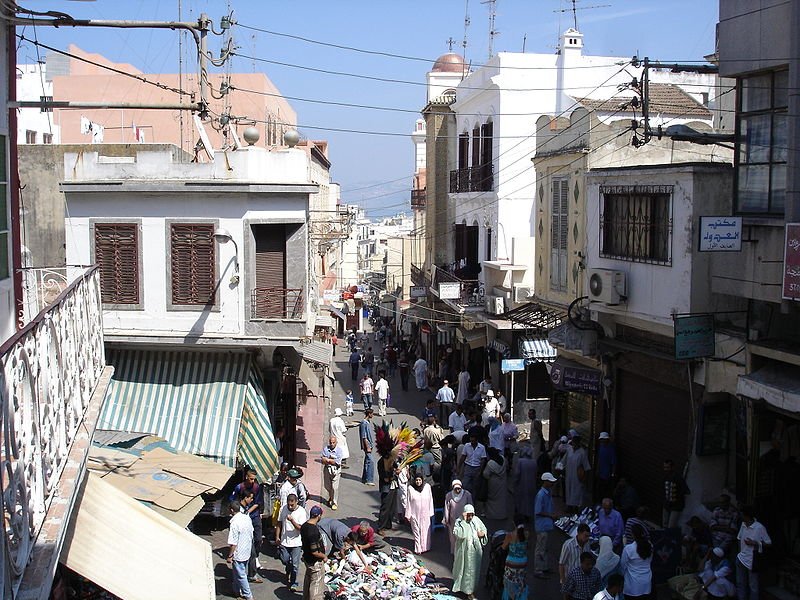
 Tangier, Morocco
Tangier, Morocco http://commons.wikimedia.org/wiki/File:Tanger1.JPG
http://commons.wikimedia.org/wiki/File:Tanger1.JPG Hedwig Storch
Hedwig Storch
Tangier (طنجة) is a city on the northernmost part of Morocco. It is on the southern coast of the Strait of Gibraltar. 12 km to the west of the city is Cape Spartel, where the Mediterranean Sea meets the Atlantic Ocean. Tangier presently has a population exceeding 700,000 (2011 estimate).
Due to its strategic location, the area around Tangier has been settled for millenia. There was a settlement here established by the Carthaginian colonists in the early 5th century BC. Through its long history, it has been settled and ruled by different peoples, including Berbers, Phonecians, Romans, Arabs, Portuguese and others.
 Medina of Tangier
Medina of Tangier http://commons.wikimedia.org/wiki/File:Tangier_street_in_old_Medina.jpg
http://commons.wikimedia.org/wiki/File:Tangier_street_in_old_Medina.jpg Entropy1963
Entropy1963
Tangier fell to the Portuguese in 1471. Between 1580 and 1640 it also came under Spanish rule, due to the Iberian Union between Portugal and Spain. Eventually it was given to King Charles II of England as part of the dowry from the Portugese Infanta Catherine of Braganza.
In 1679, Sultan Moulay Ismail blockaded Tangier until he got the English to withdraw from the town. Before departing the town, the English destroyed the town and its port facilities. Once he took over the town, Moulay Ismail reconstructed some of the facilities, but by then the importance of Tangier was declining.
 St Andrew's Anglican Church, Tangier
St Andrew's Anglican Church, Tangier http://commons.wikimedia.org/wiki/File:Saint_Andrew_church_Tangier.jpg
http://commons.wikimedia.org/wiki/File:Saint_Andrew_church_Tangier.jpg Cosmos45
Cosmos45
When Morocco was partitioned between France and Spain in 1912, its sultan Moulay Hafid was forced into exile at the Sultanate Palace in the Tangier Kasbah. In 1923 Tangier was made an international zone jointly controlled by France, Spain and Britain. At the start of the Second World War, Spanish troops occupied Tangier just as Paris fell to the Nazis and remained until 31 August, 1945, when Tangier's international zone status was restored. In 1956 the city joined the rest of Morocco when the latter gained full independence.
Visiting Tangier
Many visitors to Tangier arrive by way of ferry from Tarifa in Spain. There is a ferry every two hours. You can also fly to the city, arriving at the Tangier-Ibn Batouta Airport (TNG), located some 12 km (7.5 mi) from the city center. The airport is served by Royal Air Maroc, British Airways, easyJet and Ryanair, among others. From the airport, a taxi ride to the city center costs 100 Dh. Street in Tangier
Street in Tangier http://commons.wikimedia.org/wiki/File:Tangier3.JPG
http://commons.wikimedia.org/wiki/File:Tangier3.JPG Svilen Enev
Svilen Enev
Places of Interest in Tangier
- Ancien Palais du Mendoub
Historic building used by the Mendoub, the sultan's representative, for receptions. - Anglican Church of St Andrew
Church built in 1894 for the use of the British population in Tangier. - Avenue Pasteur
One of the main streets in the new town of Tangier. Among the sights here include the Grand Synagogue and the Gran Teatro Cervantes. - Bay of Tangier
A crescent-shaped bay lined by a beach and a coastal road, the Avenue d'Espagne. - Café Hafa
Renowned cafe that first opened in 1921 and still retaining its furniture and décor. Many foreign celebrities have paid it a visit. - Colline du Charf
Hill over Tangier that provides a scenic view of the city below. - Fondation Lorin
Gallery housed in a former synagogue displaying newspapers, photographs and posters related to local happenings of Tangier. - Fondouk Chejra
Also called the Poor Man's Souq, this is a bazaar specializing in shops selling fabric. - Galerie d'Art Contemporain Mohammed Drissi
Gallery named in honor of Moroccan artist Mohammed Drissi (1946-2003) hosts regular exhibits by local and international artists. - Grand Mosque of Tangier
Mosque erected over the site originally occupied by the Portuguese cathedral, dating from the time of Moulay Ismail. - Grand Socco
Now called Place du 9 Avril 1947, this is a square between the new town and the medina. It was renamed to commemorate the speech made by Mohammed V in support of independence. - Kasbah of Tangier
The citadel built during the Portuguese rule of Tangier. This well preserved medieval neighborhood has high walls and gates. - Kasbah Mosque
Mosque with an octagonal minaret within the Tangier Kasbah. - Musée Archéologique
Museum housed in Dar el Makhzen, the palace of the 17th century ruler Ahmed ben Ali, showcasing the local artifacts from prehistoric times to the 19th century. - Musée de Carmen-Macein
A private museum in the Tangier Kasbah showcsing works by Picasso, Max Ernst and Georges Braque. - Petit Socco
A country market on the site that was originally a Roman forum. - Place de France
Watering hole for the locals of Tangier, this square has also attracted diplomants and famous foreign visitors. - Quartier du Marshan
Turn of the century neighborhood to the west of the Kasbah favored by high officials and the ruling class. - Ramparts of Tangier
Coastal fortification with view of the sea, the port and strait. - Rue de la Liberté
One of the main streets of Tangier, running from the Grand Socco to the new town. - Rue Es-Siaghine
Lively street lined with cafés and shops, this was once the main street during Roman times.
 Latest updates on Penang Travel Tips
Latest updates on Penang Travel Tips
About this website

Dear visitor, thank you so much for reading this page. My name is Timothy Tye and my hobby is to find out about places, write about them and share the information with you on this website. I have been writing this site since 5 January 2003. Originally (from 2003 until 2009, the site was called AsiaExplorers. I changed the name to Penang Travel Tips in 2009, even though I describe more than just Penang but everywhere I go (I often need to tell people that "Penang Travel Tips" is not just information about Penang, but information written in Penang), especially places in Malaysia and Singapore, and in all the years since 2003, I have described over 20,000 places.
While I try my best to provide you information as accurate as I can get it to be, I do apologize for any errors and for outdated information which I am unaware. Nevertheless, I hope that what I have described here will be useful to you.
To get to know me better, do follow me on Facebook!
Copyright © 2003-2025 Timothy Tye. All Rights Reserved.

 Go Back
Go Back